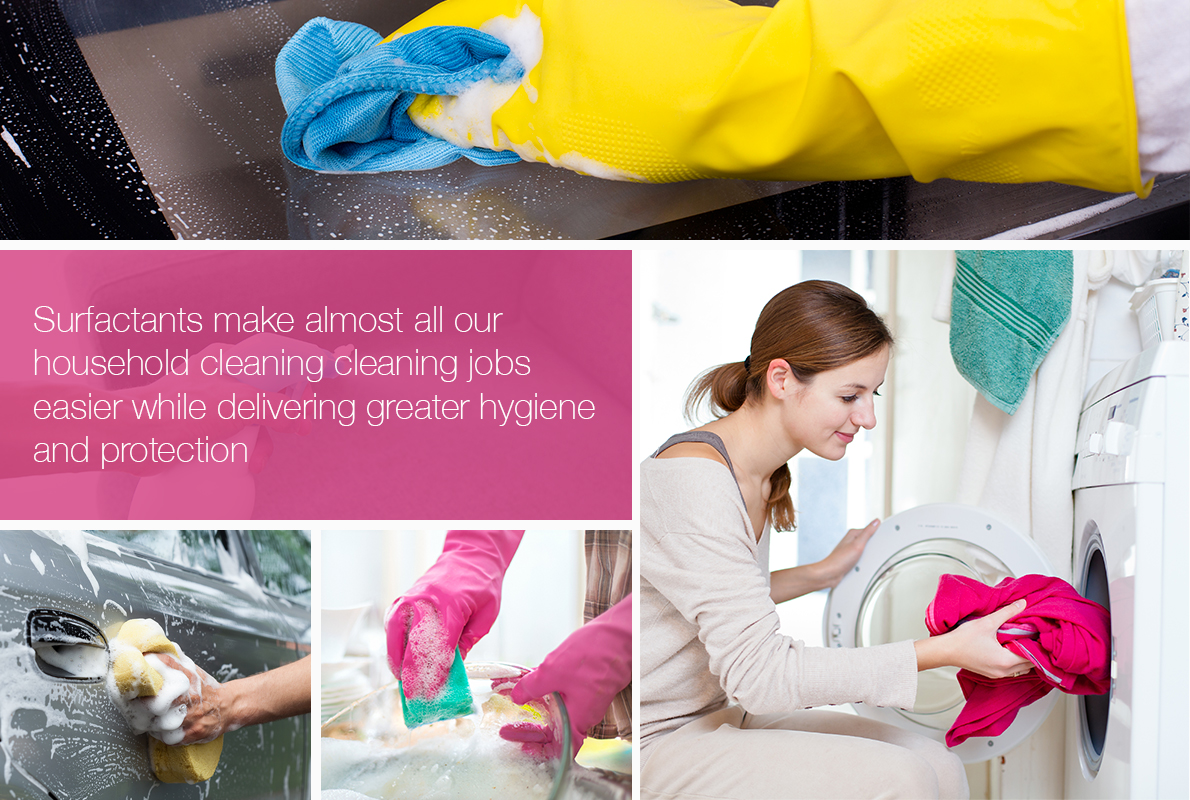
Typical home care products
- Laundry detergents (powder, liquid and tablet)
- Fabric conditioners
- Dishwashing detergents (liquid and tablet)
- Hard floor and surface cleaners
- Glass cleaners
- Carpet cleaners
- Oven cleaners
- Air fresheners
- Car shampoo
A vast number of different surfactants are employed in home care detergent applications, each one displaying different performance or physical properties and designed for the specific task at hand.
One of the biggest and most familiar applications is laundry detergents - both powder and liquid form – where the surfactants have to work particularly hard. Together with the other constituents, they have to accomplish more than just clean. From the moment the detergent package is opened until the last dose is used, the detergent must remain free-flowing and easy to store, not lump (if powdered), dissolve easily and be easy to introduce into the washing machine.
During the washing process, the surfactants disperse not only liquid soil but also solid residues, such as dirt particles, from clothing and textile fibres then keep it suspended in the water solution so that it does not settle again and can be easily rinsed away. At the same time, they prevent fibres from becoming electrically charged, ensuring that the cleaning effect lasts longer because charged fibres and hairs attract dirt particles.
Laundry detergents do all this while not harming delicate fabrics or the hands, and surfactants in fabric softeners help keep freshly laundered clothing and fabrics from rubbing against the skin. Smart surfactant design has also enabled these detergents to do all this while working at lower water temperatures, reducing the energy intensiveness of doing the laundry.
Special low-foaming surfactants do most of the work in the dishwasher, while foaming and skin-compatible surfactants are suited to washing dishes by hand. Others with high cleaning and wetting power, and which require no subsequent wiping or rinsing, are employed in cleaning products for floors, windows and bathrooms.
In carpet and rug cleaners, surfactants prevent fibres from becoming statically charged and attracting dust particles, which means they are easier to keep clean.
- See also:
- Personal Care
- Health Care

